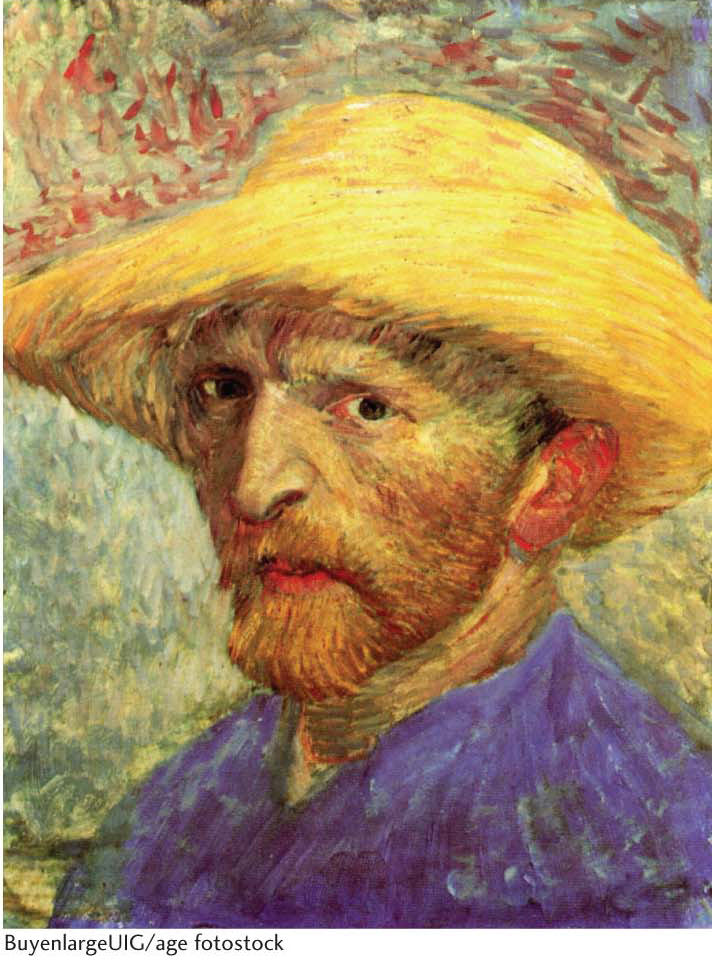RNA Processing in Eukaryotes
38.1 Mature Ribosomal RNA Is Generated by the Cleavage of a Precursor Molecule
38.2 Transfer RNA Is Extensively Processed
38.3 Messenger RNA Is Modified and Spliced
38.4 RNA Can Function as a Catalyst

Vincent van Gogh, a post-Impressionist painter (Dutch, 1853–1890) shown here in a self-portrait, suffered bouts of madness, and scholars have long debated the extent to which his madness affected his painting. His metal health problems may have been caused by acute intermittent porphyria, a disease that can result from splicing defects in an enzyme in heme metabolism.
Virtually all the initial products of transcription are further processed in eukaryotes. For example, primary transcripts (pre-mRNA molecules), the products of RNA polymerase II action, acquire a cap at their 5′ ends and a poly(A) tail at their 3′ ends. Most importantly, nearly all mRNA precursors in higher eukaryotes are spliced. Most genes in eukaryotes are discontinuous mosaics of regions that encode amino acids, called exons, and noncoding regions, called introns, that are removed by splicing. Introns can make up most of the primary transcript; some mRNAs end up being only a tenth of the size of their precursors.
We begin by examining the processing of rRNA and tRNA. We then move on to the processing of mRNA, including how alternative splicing generates multiple mRNAs from a single gene. The chapter ends with a consideration of the catalytic properties of RNA.
